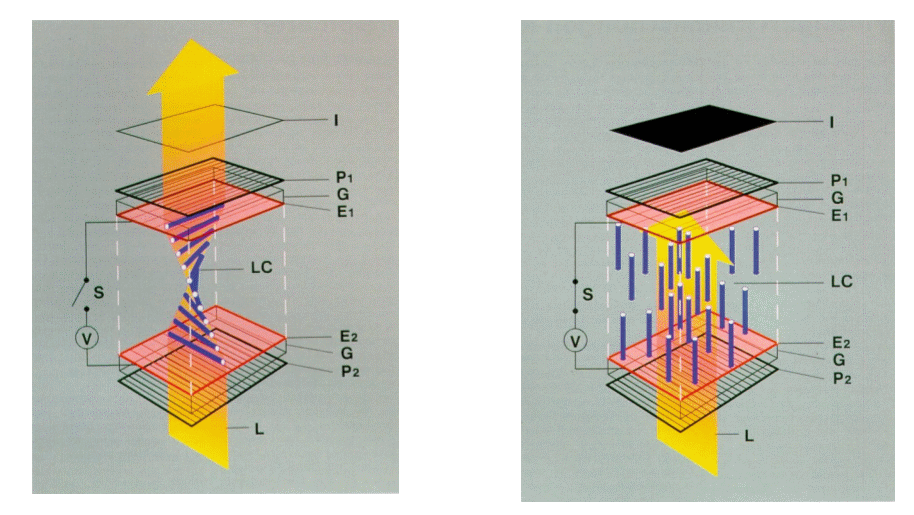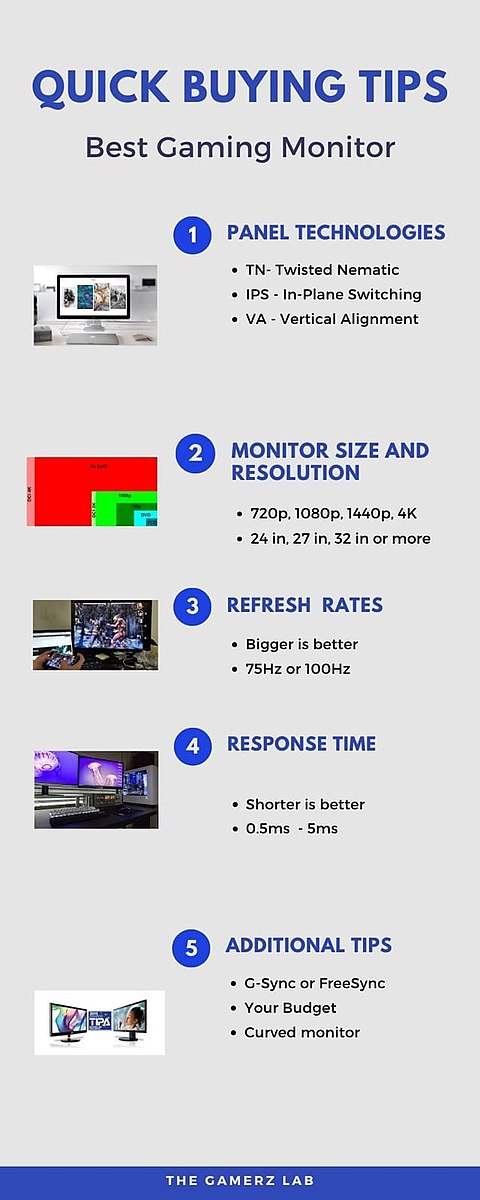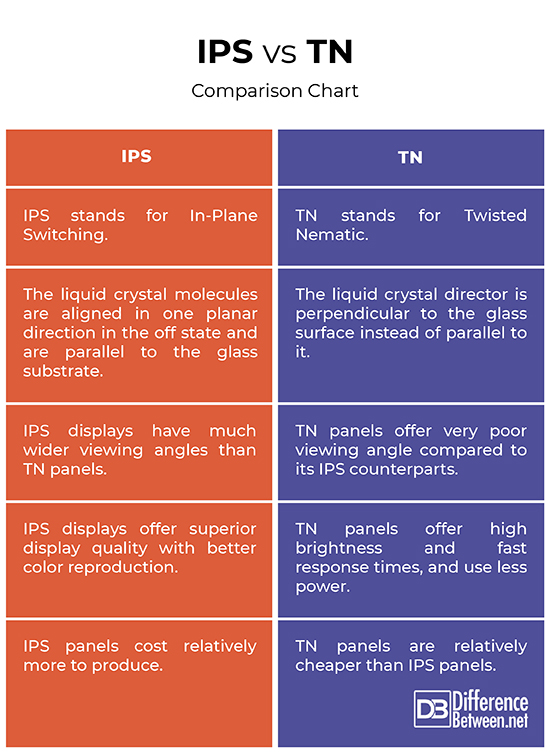Difference Between IPS and TN
The two most common and widely used technologies used in the manufacturing of liquid crystal displays are twisted nematic (TN) and in-plane switching (IPS). These are the two most preferred technologies used in the displays of PC monitors, especially gaming monitors. Most of the liquid crystal displays use either twisted nematic (TN) or super twisted nematic (STN) electro-optical effects. The first TN displays were first appeared in the 1970s and quickly became a breakthrough in display technology that led to the commercialization of liquid crystal displays in electronic devices. The two best things about TN panels are super fast response times and less manufacturing cost. But the technology has its downsides too; for one, it has poor viewing angle and second, the color reproduction is very poor. As a result, IPS display technology was developed to overcome the limitations of TN display panels with better color reproduction and superb viewing angles.

What is Twisted Nematic (TN)?
Twisted nematic (TN) panels were the first widely produced liquid crystal display screen technology which went on to become the cheapest and the fastest among the other display technologies. TN panels were the first mass produced flat-screen monitors and were simple, directly addressed segment displays as still used. Soon after the production of TN displays in 1971, the commercialization of low information content LCDs for watches and calculators began. However, passive matrix addressing of TN cells failed to meet the requirements for viewing angle and contrast ratio in laptop displays. This led to the development of super twisted nematic (STN) displays which offered substantial improvements in contrast ratio and viewing angle over the passive matrix TN displays. But it did not lead to a general solution of the problem.

What is In-Plane Switching (IPS)?
In-Plane Switching (IPS) is one of the widely used screen technology for liquid crystal displays that offer an improved, alternative solution to the earlier TN panel’s limited viewing angle, contrast ratio and color reproduction. The IPS display technology was first introduced by Hitachi in 1996 and demonstrated excellent viewing angle capabilities due to the horizontal movement of liquid crystal molecules with respect to the substrate plane. It soon became the leader in the field of LCD industry. IPS displays use liquid crystals aligned in parallel to produce rich colors and improve picture uniformity. In 1998, Fujitsu introduced the multi-domain vertical alignment (MVA) based on the VA technology, which improved the viewing angle performance substantially.
Difference Between IPS and TN
Technology
– Both IPS and TN are popular screen technologies for liquid crystal displays used in PC monitors, especially gaming monitors. TN is probably the most common type of display panel used for liquid crystal displays on PC monitors. TN panels work on the underlying principle of polarized light and use vertical alignment of the molecules, termed homeotropic. The liquid crystal director is perpendicular to the glass surface instead of parallel to it. IPS panels, on the other hand, are a different technology wherein LC molecules are aligned in one planar direction in the off state and are still parallel to the glass substrate.
Viewing Angle
– Due to the horizontal movement of liquid crystal molecules with respect to the substrate plane, IPS panels demonstrate excellent viewing angle capabilities. IPS displays have much wider viewing angles and the colors do not shift even if you’re not directly facing the screen. TN panels, on the other hand, offer very poor viewing angle and colors may look a little washed out if you are not directly sitting in front of the screen. The IPS displays definitely look better at varying angles and the poor viewing angles of TN displays is the only reason you would not want a TN panel on your monitor.
Display Quality
– IPS displays use liquid crystals aligned in parallel to produce rich colors and improve picture uniformity. IPS offers superior display quality with better color reproduction, especially the black color reproduction which eliminates the washed-out effect as you would normally experience in TN panels. When it comes to display quality, the TN panels definitely lack in contrast and viewing angle performance, but offer high brightness and fast response times while using less power than its IPS counterpart. Color gamut is yet another area where IPS displays have an upper hand. However, unlike IPS displays, TN panels are relatively cheaper.
IPS vs. TN: Comparison Chart

Summary
In IPS displays, the liquid crystal molecules are oriented in a planar manner on the substrate, wherein in TN panels, the liquid crystal molecules are perpendicular in orientation with respect to the glass substrate plane. Due to this horizontal movement of LC molecules, IPS displays offer much wider viewing angles with excellent color reproduction, which results in significantly improved picture uniformity. Though, they relatively cost more than their TN counterparts, the colors are much better if you’re looking straight on. TN panels, however, offer faster response times and refresh rates than IPS displays, and are cheaper. TN panels can also handle high refresh rates of up to 240 Hz, which makes them ideal for multiplayer gaming, particularly eSports.
- Difference Between Caucus and Primary - June 18, 2024
- Difference Between PPO and POS - May 30, 2024
- Difference Between RFID and NFC - May 28, 2024
Search DifferenceBetween.net :
Leave a Response
References :
[0]Yeh, Pochi and Claire Gu. Optics of Liquid Crystal Displays. New Jersey, United States: John Wiley & Sons, 2009. Print
[1]Jin, Qun et al. Human Centric Technology and Service in Smart Space: HumanCom 2012. Berlin, Germany: Springer, 2012. Print
[2]Bahadur, Birendra. Liquid Crystals: Applications and Uses, Volume 1. Singapore: World Scientific, 1990. Print
[3]Kwok, Hoi-Sing. Progress in Liquid Crystal Science and Technology: In Honor of Shunsuke Kobayashi's 80th Birthday. Singapore: World Scientific, 1990. Print
[4]Hainich, Rolf R. and Oliver Bimber. Displays: Fundamentals & Applications, Second Edition. Florida, United States: CRC Press, 2016. Print
[5]Image credit: https://commons.wikimedia.org/wiki/File:Gaming_monitor_buying_tipes.jpg
[6]Image credit: https://commons.wikimedia.org/wiki/File:TN-LCD-schematic-MS-208kB.png
